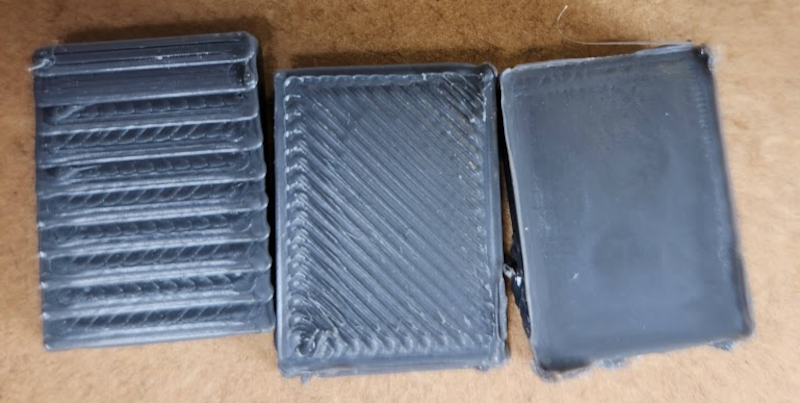If you want to smooth out the top surface of your FDM 3D prints, you can try ironing. Many slicers allow you to set this option, which drags the hot printhead through the top surface with a tiny bit of plastic to smooth out the extrusion lines. However, a recent paper explains how non-planar ironing can provide a better result.
Usually, non-planar printing requires rotating the print bed in addition to the normal linear motion. However, you can also manipulate the layer height in real time to create bulges in the 3D print. This is the approach taken by Curvislicer, which shares authors with this paper. Another approach is to build a part conventionally but add non-planar printing to the last few layers.
The non-planar ironing is a variation of the latter technique. After slicing, the top layer of g-code passes through a Python script. The results on a test object look very impressive. We’d be interested to see how some more complex shapes look, though.
Of course, it looks like all you need is an ordinary printer, a modified copy of Slic3r, and the script, so if you try it yourself, let us know what you think. It would be great to smooth prints without extra chemicals and post-processing. While you can get good results, it is a lot of work.
















Wonder if you could finish your part, change the nozzle for a “hot ball end” and run that over the surface again.
CR touch already has deployable metal ball :-D too bad it’s not heated :-D
..or just attach a ironing ‘blob’ over it?
Yeah. It seems like such an obvious idea we just have to find the person who’s already tried it…
If you watch any of the videos of the people who sculpt with the extruder “pens” they get really beautiful results but spend about 60% of the time with a soldering iron (and various tip shapes) smoothing and adding ultra fine details.
I’d be curious to see someone try that, since you can get plastic melting tips for your soldering iron. They’re normally used to weld plastic together, but can also be used to flatten/smooth.
Perhaps make the hot end an electromagnet, so the printer can grab a ballbearing when it needs it.
This could work well
Sideeyes the clothes-iron..
And teflon pressing sheet?
Team this up with a four axis printer and it would be badass!
https://www.3printr.com/the-rotbot-non-planar-4-axis-3d-printing-3958950/
Some great suggestions, add steam in there somewhere 😀
Turn off the cooling fan and now your nozzle is an iron.
It oozes, has a flat horizontal surface which isn’t very good for what they’re trying to accomplish here, and may pick up plastic from the piece. but it works, sort of. I recall Cura extruded a tiny bit while ironing, but on something non-planar you wouldn’t be able to do that.
A hot air tip attachment for printers would be pretty sweet..